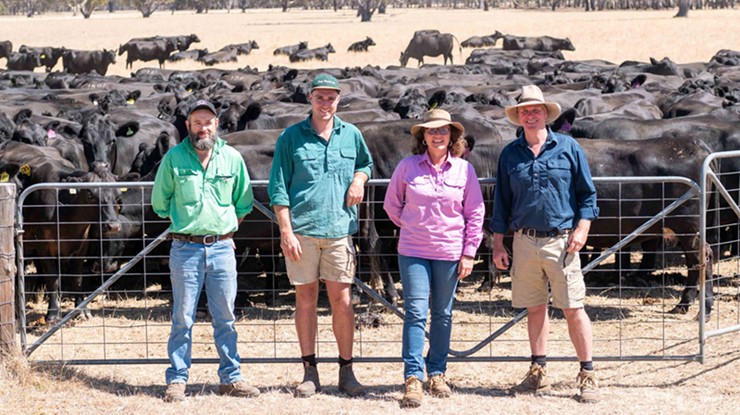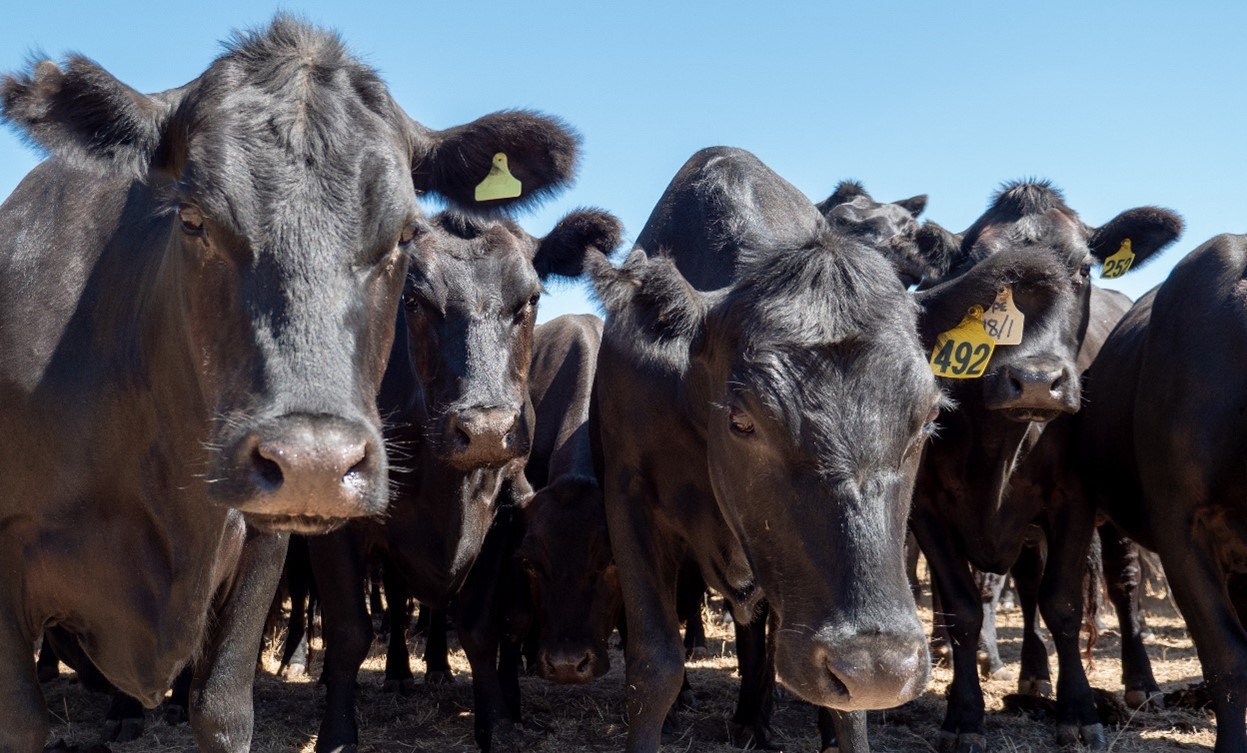 From left: Alex Walter with Tom, Anne and Todd Woodard at the Woodard family’s beef and sheep property near Naracoorte, SA.
From left: Alex Walter with Tom, Anne and Todd Woodard at the Woodard family’s beef and sheep property near Naracoorte, SA.
Peel Pastoral’s playbook: data, diversity, and dung beetles
Over nearly three decades of stewardship, the Woodards have transformed their south-east SA grazing enterprise into a resilient business with land, livestock and family at its heart.
Todd and Anne Woodard, through the ‘Peel Pastoral’ partnership with Todd’s mother Heather and sister Sue, purchased the 930ha ‘Walnamere’ at Wrattonbully, outside Naracoorte, 27 years ago. Although Todd and Anne are the first generation to run this property, their management is grounded in their industry experience.
Their complementary qualifications in Farm Management and Agricultural Production (Todd) and Natural Resource Management (Anne) from SA’s Roseworthy Agricultural College took them around Australia before they found a place to call home in the prime agricultural region of the Limestone Coast.
Today, Peel Pastoral has expanded to 3,600ha of owned and leased country. It’s home to a 1,300-head self-replacing Angus breeder herd and 3,000 ewes based on White Suffolk genetics with a high-fecundity Multimeat gene. The team has grown to include Assistant Manager Alex Walter, and Todd and Anne’s son Tom, in the role of Livestock Manager. Their daughter Pip and her husband Pieter are involved in another farming business in the region.
Although Peel Pastoral is a family business, it has a corporate structure to include off-farm family investors. This professional approach flows throughout the business, and Anne has implemented processes such as workplace safety systems and professional development opportunities.
Regenerative evolution
The region’s Mediterranean climate delivers hot summers and cool, wet winters. While the average annual rainfall throughout the Woodards’ ownership sits at 520mm, their 12-month rolling rainfall through to May 2024 was 400mm.
When Feedback visited the Woodards coming into autumn, the amount of standing dry feed on offer made it hard to believe they were emerging from one of the driest 12 months on record.
Rather than depend on containment feeding, extensive supplementation or significant destocking, the family has a detailed grazing strategy to secure feed despite what the season throws at them
“We always say, you have to love grass more than livestock,” Todd said.
“If you can get your pastures and soils as productive as possible, your livestock enterprise will flourish on top of that.”
This focus on grass is founded on three core principles of grazing management to support and enhance permanent perennial grasslands:
- working with nature: matching animal nutritional requirements with peak pasture growth (timing of reproduction)
- matching carrying capacity with stocking rates
- data-backed decisions.
Grazing cycles
The Woodards have split their land into 210 paddocks ranging from 15–25ha. Livestock are moved across this network to support pasture rest/recovery phases.
“Our pasture management is based around permanent, perennial grasslands,” Todd said.
“Perennials are so important because of their roots, their durability, if they are managed correctly, and their robustness.
“They enjoy a short intense graze and long rest, so we move livestock based on ground cover targets, animal nutritional requirements and paddock rest.”
The deep-rooted nature of perennials – combined with 80% ground cover to minimise evaporation, erosion and high soil temperatures – allows the Woodards to take advantage of any, even out-of-season, rain.
Grazing to protect plants’ roots also supports soil biology, to enhance carbon capture and reduce inputs.
The resulting paddock health supports robust populations of dung beetles. Tom and Alex regularly turn over dung in paddocks to monitor beetle activity and to check for dietary signs that cattle are ready to move on to new paddocks. They’ve been involved in projects to breed new varieties of dung beetles for year-round activity and soil and carbon benefits.
The family has also instigated soil carbon projects, to create another layer of capital.
“We not only see a huge production benefit by increasing our soil carbon, but it also enables, us as producers, to be involved in the wider conversation around carbon credits and to access emerging markets based on our carbon balance sheet.”
Set-aside paddocks
Coming into spring, the Woodards pull out up to 600ha from the grazing rotation, creating a bank of reserve feed to draw on through the following autumn feed gap.
“With our spring flush, feed gets ahead of us, so we drop 15–20% out of the rotation. This allows us to concentrate on managing the pastures in the remaining paddocks,” Todd said.
“These set-aside paddocks are essentially our ‘hay stack’ for deferred grazing. By the time stock come onto them in April/May, there’s about 200 days’ rest in them and they take us through the opening break. This allows the rest of the paddocks in the rotation to grow enough pasture to support the animals when they come out of the set-aside paddocks. We use electric tapes to section paddocks to achieve high-impact, high-density grazing.”
The philosophy of working with the environment, rather than against it, extends to all aspects of management. For example, they realigned calving and lambing from autumn to winter, to better match feed on offer with animals’ nutritional requirements.
Tom said this grazing system has delivered solid reproduction rates despite a tough season, with minimal reliance on supplementation apart from a loose lick through summer from protein.
“We recorded 143% lambs marked to ewes mated, and our cattle had 90% conception with older breeders (or 88% including heifers). This was achieved with a 42-day joining period, which we feel is efficient given the seasonal conditions,” Tom said.
Decisions based on data
The Woodards use data to support rational decisions when times are tough.
“Our strategy is simple. We set key dates, formulate plans around those dates, then act on those plans,” Todd said.
“We’ve developed predictive mechanisms in our business, based on data such as rainfall and feed on offer, to understand in advance where we’re going. This data has built up over time to become accurate and highly meaningful to making business decisions.”
They crunch the numbers three months out from key dates (such as the autumn feed gap) to calculate how many animals they can take to their ‘green date’ (the start of the new growing season). The predictions are ground-truthed with pasture measurements to identify if triggers need to be pulled to adjust stocking.
“We’re always calculating how much grass we’ve got in front of us, to form a picture about whether we are under or over-stocked. In response, we can trade cattle to capitalise on surplus grass or sell animals we’ve already identified to lighten the load.”
These ‘first to go’ stock include dry animals, as well as second-cycle calvers which are identified with foetal ageing at preg testing. These cows are initially retained but can be sold if pasture availability necessitates reduced numbers.

The Woodards use data to make rational decisions to manage their livestock, regardless of what seasonal challenges they face.
Breed selection
In keeping with their philosophy of working with nature, the Woodards have fine-tuned their herd and flock to be seasonally responsive.
Alex said the main breeding objectives are fertility, followed by good growth and carcase traits.
“Ideally, we’re looking to breed an animal that suits our system and environment, and is going to produce a good quality calf which can either be a replacement breeder or is saleable for our target markets.”
Their composite flock is primarily geared to the store lamb market but also supports opportunistic finishing if the season allows.
“Likewise, on the cattle side of the business, we turn off weaners to repeat local clients – but if we have a good year, we can keep them for longer,” Todd said. “We love the flexibility this gives us.”
Alex uses tolls such as electronic identification to record data about weight gains and fertility, and regularly condition scores to ‘pull levers’.
“Condition scoring is very useful for making decisions,” Alex said. “We often do our weaning based on the condition score of the cow, rather than a set date. I aim for a condition score of three for cows at calving and at weaning – this allows us to keep a bit more condition on the cow, which she may need to draw down on later in the season.”
Looking ahead, Todd said their goals were to continue making Peel Pastoral more robust and resilient as they navigate climate and market variabilities, with a particular focus on how they understand and manage natural capital on-farm.
Peel Pastoral was featured as one of three virtual farm tours at an MLA MeatUp event held in Naracoorte. View video below:



